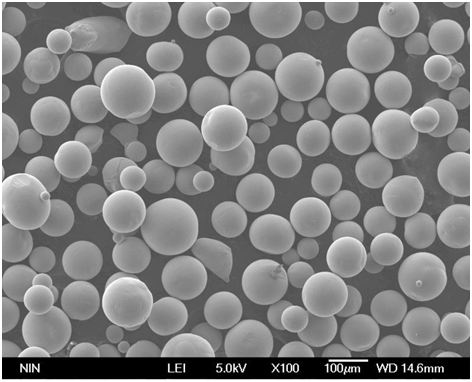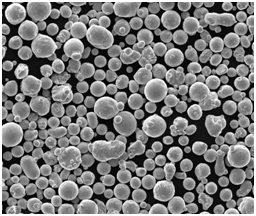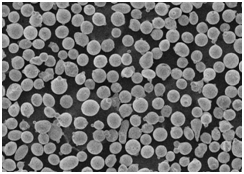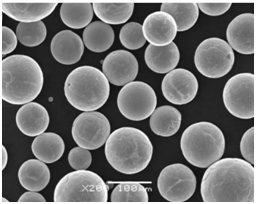Visão geral do Multi Material Jetting (MMJ)
Bem-vindo ao fascinante mundo do Jateamento de múltiplos materiais (MMJ)! Se está aqui, provavelmente está curioso sobre o que torna o MMJ uma tecnologia de destaque no reino da impressão 3D e da fabricação aditiva. Imagine isto: tem uma impressora, mas em vez de tinta, ela jorra pequenas gotas de diferentes materiais para construir estruturas complexas camada por camada. Legal, certo? O MMJ oferece versatilidade e precisão incomparáveis, tornando-o um divisor de águas em indústrias que vão desde a aeroespacial até a saúde.
Então, o que é exatamente o Multi Material Jetting? Essencialmente, é um tipo de impressão 3D que envolve a deposição simultânea de múltiplos materiais. Esta tecnologia permite a criação de peças intrincadas com propriedades variadas, combinando metais, polímeros e cerâmicas num único processo de construção. É como ter a capacidade de pintar com uma paleta de materiais, cada um adicionando seu toque único à obra-prima final.
Introdução ao Multi Material Jetting (MMJ)
Antes de mergulharmos nos detalhes técnicos, vamos preparar o terreno. O Multi Material Jetting não é apenas uma tecnologia futurista; já está a revolucionar a forma como projetamos e fabricamos produtos. Ao permitir a combinação de múltiplos materiais num único processo, o MMJ permite a criação de peças com geometrias complexas e propriedades personalizadas. Isso significa que pode ter uma peça que seja flexível e rígida, ou uma que combine materiais condutores e isolantes, tudo criado num processo contínuo.

Composição do Multi Material Jetting (MMJ)
Quando falamos de MMJ, a composição dos materiais utilizados é crucial. Aqui está uma análise dos materiais primários:
| Tipo de material | Composição | Propriedades |
|---|---|---|
| Metais | Aço inoxidável, titânio, ligas de alumínio | Alta resistência, condutividade, estabilidade térmica |
| Polímeros | ABS, PLA, fotopolímeros | Flexibilidade, biocompatibilidade, facilidade de processamento |
| Cerâmica | Alumina, zircônia | Dureza, resistência térmica, isolamento elétrico |
| Compostos | Misturas de metal-polímero, misturas de cerâmica-polímero | Propriedades mecânicas aprimoradas, condutividade e flexibilidade personalizadas |
Cada material traz algo único para a mesa. Os metais oferecem robustez e durabilidade, os polímeros proporcionam flexibilidade e facilidade de uso, enquanto as cerâmicas são perfeitas para aplicações de alta temperatura.
Características de Jateamento de múltiplos materiais (MMJ)
Compreender as características do MMJ ajuda-nos a apreciar sua versatilidade e potencial. Aqui estão algumas características principais:
- Precisão e Exatidão: O MMJ pode alcançar impressões de alta resolução com espessuras de camada tão finas quanto 16 mícrons.
- Versatilidade do material: A capacidade de combinar diferentes materiais num único processo abre infinitas possibilidades para a criação de peças multifuncionais.
- Acabamento da superfície: As peças MMJ normalmente têm um acabamento superficial liso, reduzindo a necessidade de pós-processamento.
- Geometrias complexas: Designs intrincados que seriam impossíveis com os métodos de fabricação tradicionais podem ser facilmente alcançados.
Aplicações do Multi Material Jetting (MMJ)
As aplicações do MMJ abrangem uma ampla gama de indústrias. Vamos dar uma olhada em algumas das mais proeminentes:
| Setor | Aplicativo | Exemplos |
|---|---|---|
| Assistência médica | Próteses, implantes dentários, dispositivos médicos | Próteses personalizadas, implantes biocompatíveis |
| Aeroespacial | Componentes leves, montagens complexas | Peças de motores a jato, componentes estruturais leves |
| Automotivo | Protótipos, peças funcionais | Painéis personalizados, assentos ergonómicos |
| Bens de consumo | Produtos personalizados, modelos de alta detalhe | Joias personalizadas, miniaturas intrincadas |
| Eletrônicos | Placas de circuito impresso, dispositivos vestíveis | PCBs flexíveis, smartwatches |
Cada indústria beneficia das capacidades únicas do MMJ, seja na criação de componentes aeroespaciais leves, mas fortes, ou de bens de consumo altamente detalhados e personalizados.






Especificações e Padrões no Multi Material Jetting (MMJ)
Quando se trata de MMJ, a adesão às especificações e padrões é crucial para garantir a qualidade e a consistência. Aqui está uma olhada em algumas das principais especificações e padrões:
| Parâmetro | Especificação | Detalhes |
|---|---|---|
| Espessura da camada | 16-32 mícrons | Determina a resolução e o acabamento superficial da peça |
| Volume de construção | Até 1000 x 800 x 500 mm | Tamanho máximo do objeto imprimível |
| Tolerância do Material | ±0,1% | Precisão na deposição do material |
| Velocidade de impressão | 10-30 mm/hora | Varia com base na complexidade do material e da peça |
| Padrões | ISO/ASTM 52900, ASTM F2792 | Diretrizes padrão para processos de fabricação aditiva |
Fornecedores e detalhes de preços para Jateamento de múltiplos materiais (MMJ)
Encontrar o fornecedor certo e entender os custos envolvidos é essencial para quem procura utilizar a tecnologia MMJ. Aqui está uma tabela com alguns fornecedores proeminentes e detalhes de preços:
| Fornecedor | Materiais Disponíveis | Preços | Informações de contato |
|---|---|---|---|
| Stratasys | Polímeros, metais, compósitos | A partir de $50/kg | www.stratasys.com |
| Sistemas 3D | Polímeros, metais | A partir de $70/kg | www.3dsystems.com |
| HP | Polímeros | A partir de $60/kg | www.hp.com |
| Materializar | Polímeros, cerâmicas, metais | Preços personalizados | www.materialise.com |
| EOS | Metais, polímeros | A partir de $100/kg | www.eos.info |
Os preços podem variar com base no tipo de material, quantidade e fornecedor. É sempre uma boa ideia solicitar orçamentos e comparar opções antes de tomar uma decisão.
Comparando Prós e Contras do Multi Material Jetting (MMJ)
Cada tecnologia tem seus pontos fortes e fracos. Vamos comparar os prós e contras do MMJ:
| Aspecto | Vantagens | Desvantagens |
|---|---|---|
| Versatilidade de materiais | Pode imprimir com múltiplos materiais simultaneamente | Limitado pela compatibilidade do material |
| Precisão | Alta resolução e precisão | Velocidade de impressão mais lenta em comparação com a impressão com um único material |
| Complexidade | Capaz de produzir geometrias intrincadas e peças multifuncionais | Requer software e experiência avançados |
| Acabamento da superfície | O acabamento liso reduz as necessidades de pós-processamento | Pode ainda exigir algum acabamento dependendo da aplicação |
| Custo | Económico para produzir peças complexas e de baixo volume | Os custos iniciais de configuração e materiais podem ser altos |
Descrições Detalhadas dos Modelos de Pó de Metal
Agora, vamos mergulhar em alguns modelos específicos de pó de metal usados no MMJ, destacando suas propriedades e aplicações únicas:
- Aço inoxidável 316L: Conhecido por sua resistência à corrosão e resistência, o 316L é ideal para implantes médicos e equipamentos de processamento de alimentos.
- Titânio Ti6Al4V: Leve e forte, esta liga é comumente usada em aplicações aeroespaciais e biomédicas.
- Inconel 718: Uma liga de níquel-cromo com excelentes propriedades de alta temperatura, perfeita para pás de turbinas e motores de foguetes.
- Alumínio AlSi10Mg: Esta liga combina leveza com boas propriedades mecânicas, tornando-a adequada para peças automotivas e aeroespaciais.
- Cromo Cobalto (CoCr): Conhecido por sua resistência ao desgaste e biocompatibilidade, o CoCr é usado em implantes dentários e ortopédicos.
- Aço Maraging (MS1): Este aço de alta resistência é usado em ferramentas e componentes de alta tensão.
- Liga de níquel 625: Resistente à corrosão e altas temperaturas, esta liga é usada em processamento químico e aplicações marítimas.
- Cobre (Cu): Com excelente condutividade térmica e elétrica, o cobre é usado em eletrônicos e trocadores de calor.
- Aço ferramenta H13: Conhecido por sua dureza e resistência à fadiga térmica, o H13 é usado em fundição sob pressão e moldagem.
- Ouro (Au): Além de seu apelo estético, o ouro é usado em eletrônicos e dispositivos médicos por sua condutividade e biocompatibilidade.
Cada modelo de pó metálico tem seus usos e vantagens específicas, tornando o MMJ uma tecnologia versátil para várias indústrias.

Perguntas frequentes
| Pergunta | Resposta |
|---|---|
| O que é Multi Material Jetting (MMJ)? | MMJ é uma tecnologia de impressão 3D que deposita múltiplos materiais simultaneamente para criar peças complexas. |
| Que materiais podem ser usados em MMJ? | Metais, polímeros, cerâmicas e compósitos podem ser usados em MMJ. |
| Quais são os benefícios do MMJ? | Alta precisão, versatilidade de materiais, acabamento de superfície liso e a capacidade de criar geometrias complexas. |
| Quais são as limitações do MMJ? | Custos iniciais de configuração elevados, velocidades de impressão mais lentas e problemas de compatibilidade de materiais. |
| Que indústrias se beneficiam do MMJ? | Saúde, aeroespacial, automotiva, bens de consumo e eletrônicos. |
| Como o MMJ se compara a outros métodos de impressão 3D? | O MMJ oferece maior versatilidade e precisão de materiais, mas pode ser mais complexo e caro. |
| Qual é o volume de construção típico para MMJ? | Até 1000 x 800 x 500 mm, dependendo da máquina. |
| Existem diretrizes padrão para MMJ? | Sim, a ISO/ASTM 52900 e a ASTM F2792 fornecem diretrizes para processos de fabricação aditiva. |
| Como escolho um fornecedor de materiais MMJ? | Compare a disponibilidade de materiais, preços e reputação do fornecedor. Solicite orçamentos para o melhor negócio. |
| Quais são as aplicações típicas do MMJ? | Próteses personalizadas, componentes aeroespaciais leves, peças automotivas funcionais e muito mais. |

